At the conclusion of the 2020/21 Bundesliga season, the coaching carousel went into full swing. One of the clubs that had to make a move was Borussia Mönchengladbach, after Marco Rose left the club to join Borussia Dortmund. After the departure of Rose, Gladbach replaced him with then Eintracht Frankfurt boss Adi Hütter, which also resulted in a slight change in philosophy. The 52-year old Austrian came to the club after success with Frankfurt, and looked to build on it with Gladbach.
However, the 2021/22 Bundesliga season for Hütter and Gladbach was anything but successful, with the club struggling for most of the season, even battling relegation for a large portion of it. Though on the final day of the season Gladbach thumped Hoffenheim 5-1, finishing 10th for the season as a result, it was not enough to save Hütter’s job, with him and the club parting company right after the game. This tactical analysis piece will take an in-depth look at the defensive issues that Borussia Mönchengladbach had this season, and why it was likely the main reason Hütter lost his job.
Defensively poor in transition + lapses in concentration
The biggest problem this season for Borussia Mönchengladbach was their poor defensive record, with Die Fohlen’s defence heavily leaking goals all season. Gladbach shipped 61 goals this term, only relegation playoff bound Hertha Berlin and relegated Greuther Fürth conceded more. They also had a 59.51 expected goals against tally, the second worst in the Bundesliga behind only relegated Arminia Bielefeld. At first glance, when comparing their defensive record this season under Hütter, to the final season under Rose, there is not a massive difference. At the end of the 2020/21 Bundesliga season, Gladbach conceded 56 goals, with an expected goals against total of 54.89. The difference comes when looking more closely at the manner of how Gladbach conceded goals this season. Gladbach were absolutely poor when it came to defending in transition, with the back three constantly being caught out of position when the ball was turned over.
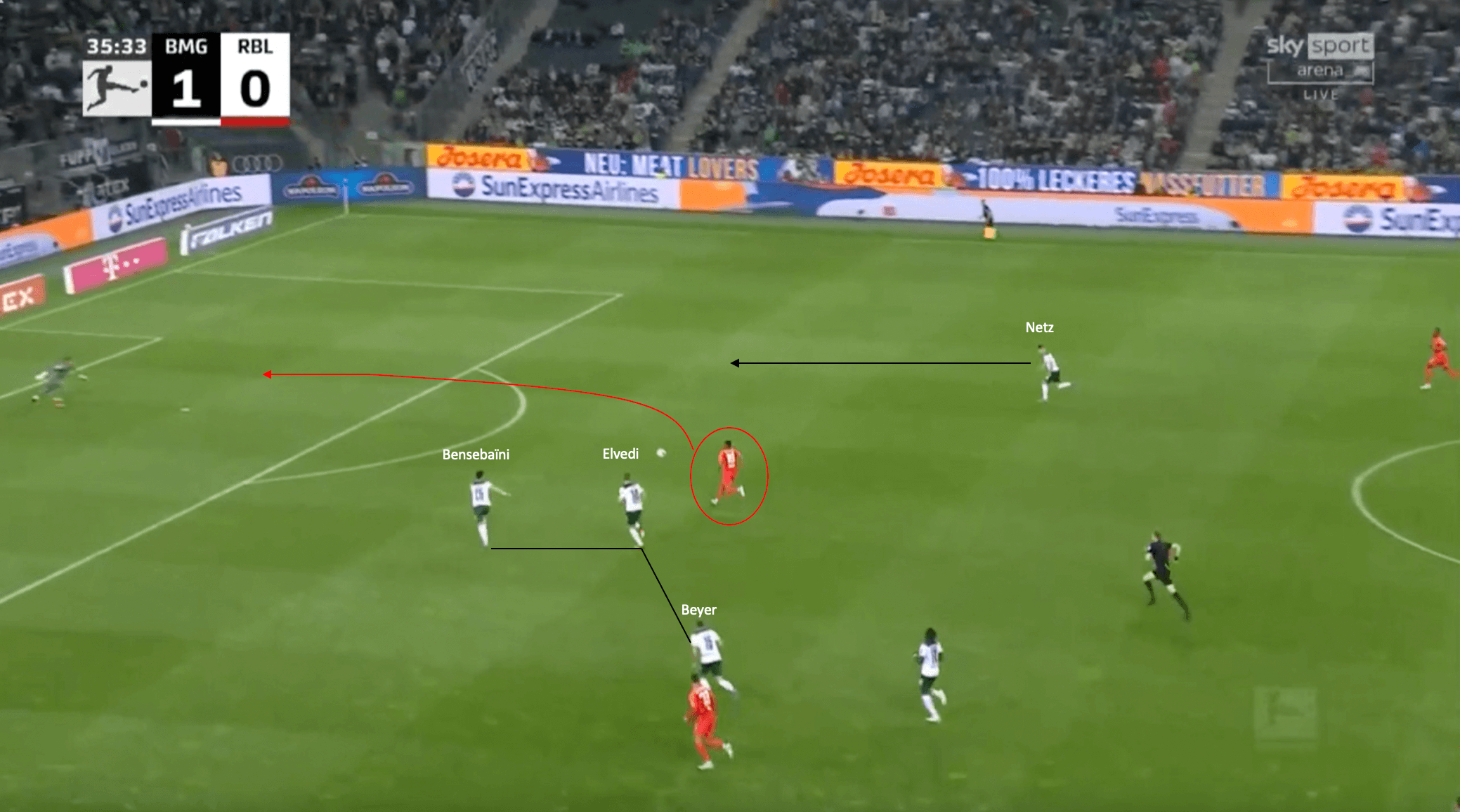
This defensive phase above from Gladbach’s match against RB Leipzig is able to excellently demonstrate the struggles that Gladbach had at the back this season. After a few passes in midfield by Leipzig, the ball is then played out wide to Andre Silva, who positioned himself in a left wing position. Instead of staying in their defensive shape and letting the wingback on the near side pressure Silva; the centre-backs step out of their shape to attempt to close Silva down. As a result, he plays the ball over the top to Nkunku, who is able to get onto the end of the pass and score before Luca Netz is able to close him down from his left wingback position. Any manager in world football knows that your back three should not be positioned like that when the opposition are in possession in the final third (almost in a straight line vertically), but this was a relatively common occurrence for Borussia Mönchengladbach this season during transitional moments.
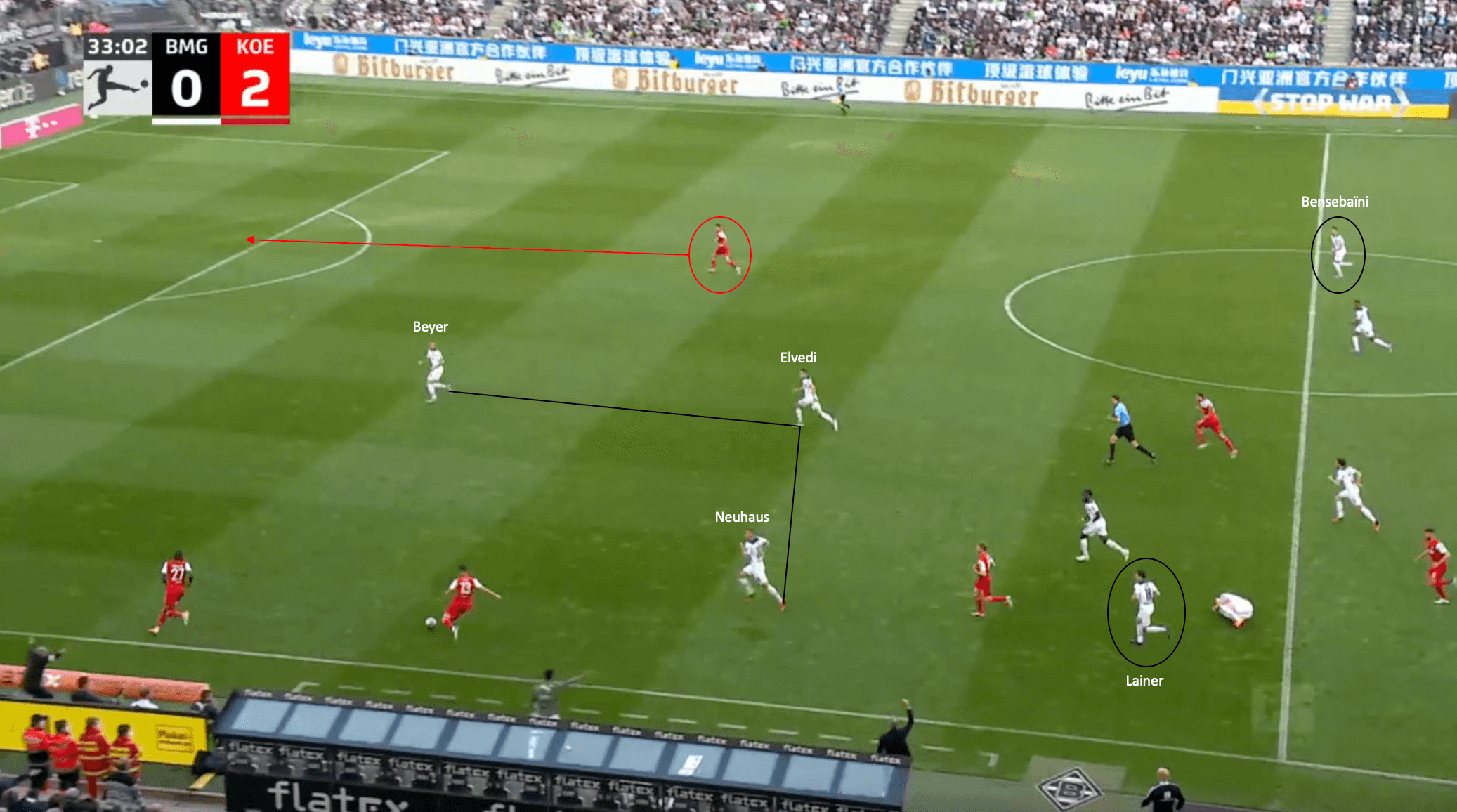
The image above shows another example of Gladbach’s defensive lapses, and once again, the concession of a goal as a result. In midfield, centre-back Matthias Ginter loses a loose ball duel, resulting in him staying on the ground, but no free kick was awarded by the referee. This meant that midfielder Florian Neuhaus was tasked with standing in for Ginter for the time being, but the defensive shape was still an absolute shambles. Both wing backs are still advanced and slow getting back, and the back three is once again in a line vertically, offering no defensive width. This allows the FC Köln player in possession to play a crossfield ball to his teammate, who is in absolute acres of space on the far side. The player on the far side gathers possession, drives into the box, and shoots past Sommer to make it 0-3 to FC Köln. This example is once again able to demonstrate how poor Gladbach were when it came to defending against transitional moments, with both their high defensive line, as well as occasional lack of communication between the back five playing their part.
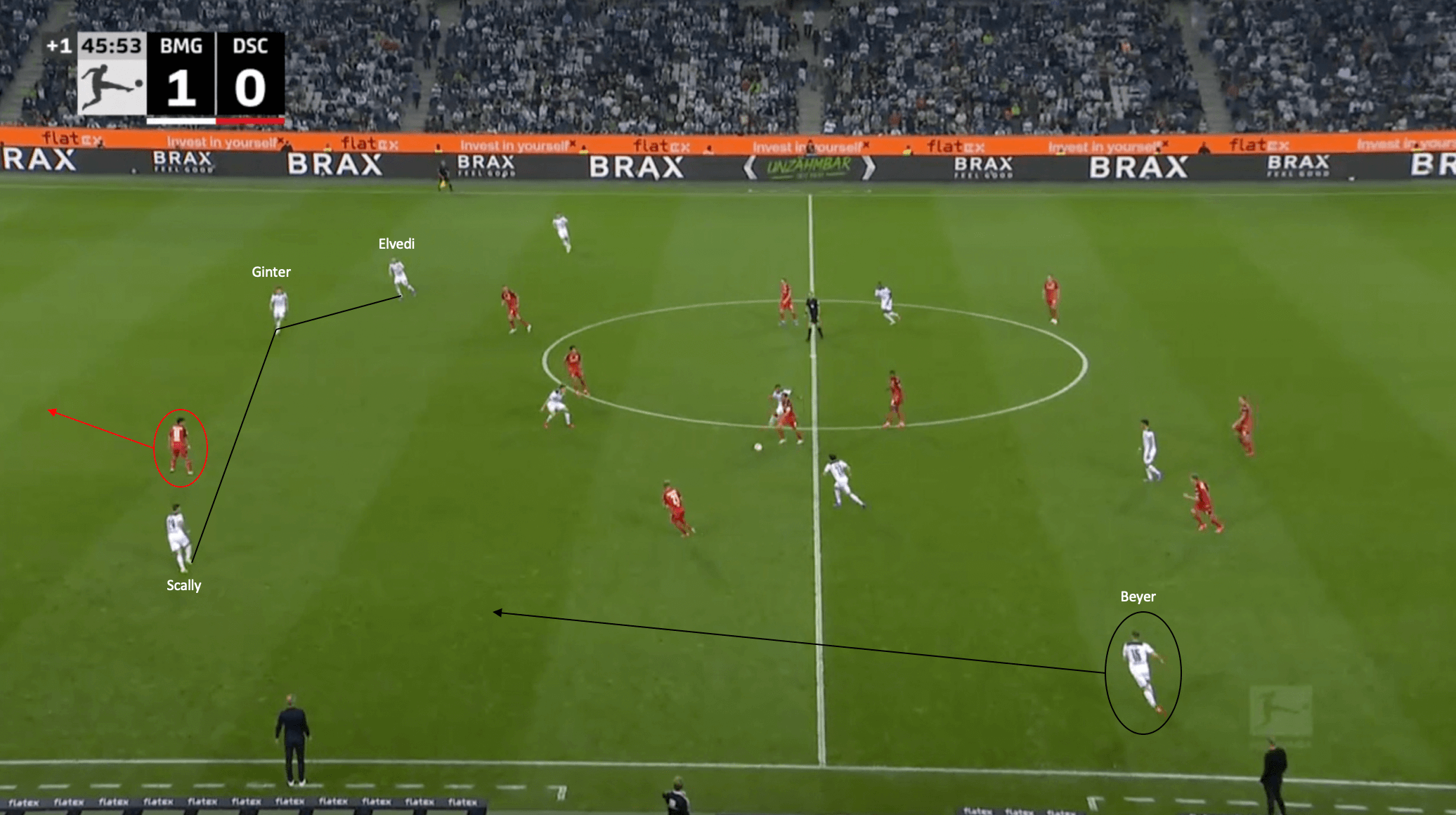
The defensive phase above from Gladbach’s game against Arminia Bielefeld once again demonstrates poor defending in transition as well as a lack of communication. Gladbach have just turned the ball over in midfield after a poor pass from Florian Neuhaus, which allows Bielefeld to counter quickly. With Beyer further advanced, Scally is tasked with taking his defensive position, but stays way too wide, allowing Okugawa the space to run in behind the back line. Ginter is also not able to step up quick enough, which allows him to play Okugawa onside. Though the goal was initially ruled out for offside, a VAR check confirmed that Ginter played Okugawa onside when the pass was initially played. Once again, poor defensive shape, as well as lack of concentration when defending transitional moments came back to haunt Borussia Mönchengladbach.
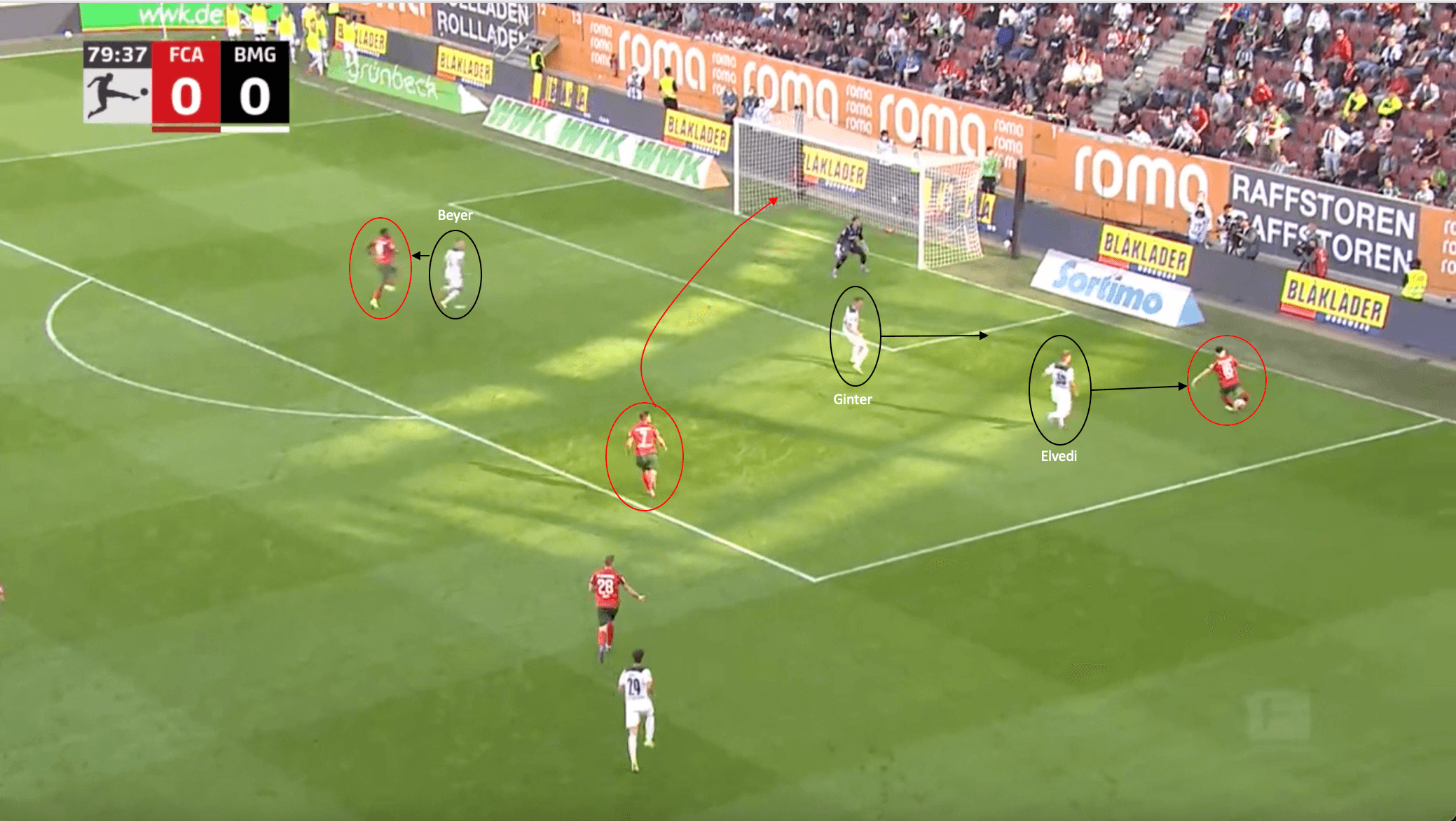
As some of the previous examples have also shown, lapses in concentration in key defensive moments also hurt Gladbach. The example above from their match earlier this season away to FC Augsburg was one of these decisive moments. The ball is in possession of the Augsburg player near the byline, who is looking for a cutback option. The player at the far post is closely marked by Jordan Beyer, which eliminates that option for the Augsburg attacker. However, Florian Niederlechner is able to ghost into the penalty box unmarked, with Matthias Ginter caught ball watching, with him never looking over his shoulder to track the movements of the Augsburg striker. As a result, the ball is cut back to Niederlechner, who is able to score the decisive goal for Augsburg, with Ginter slow to react to the ensuing cutback towards the penalty spot. Once again, another lapse in concentration defensively cost Gladbach a good result.
Poor at defending set-pieces
It was not just in transitional moments and lapses in concentration where Gladbach were poor defensively this season. They also were one of the worst sides when it came to defending against set-pieces. Their 13 set piece goals conceded were the fourth worst in the Bundesliga, behind only Bayer Leverkusen, Hoffenheim, Hertha Berlin, and Greuther Fürth. Just over 21% of Gladbach’s conceded goals this season were from set plays, with this section taking a more in-depth look at some of these goal concessions.
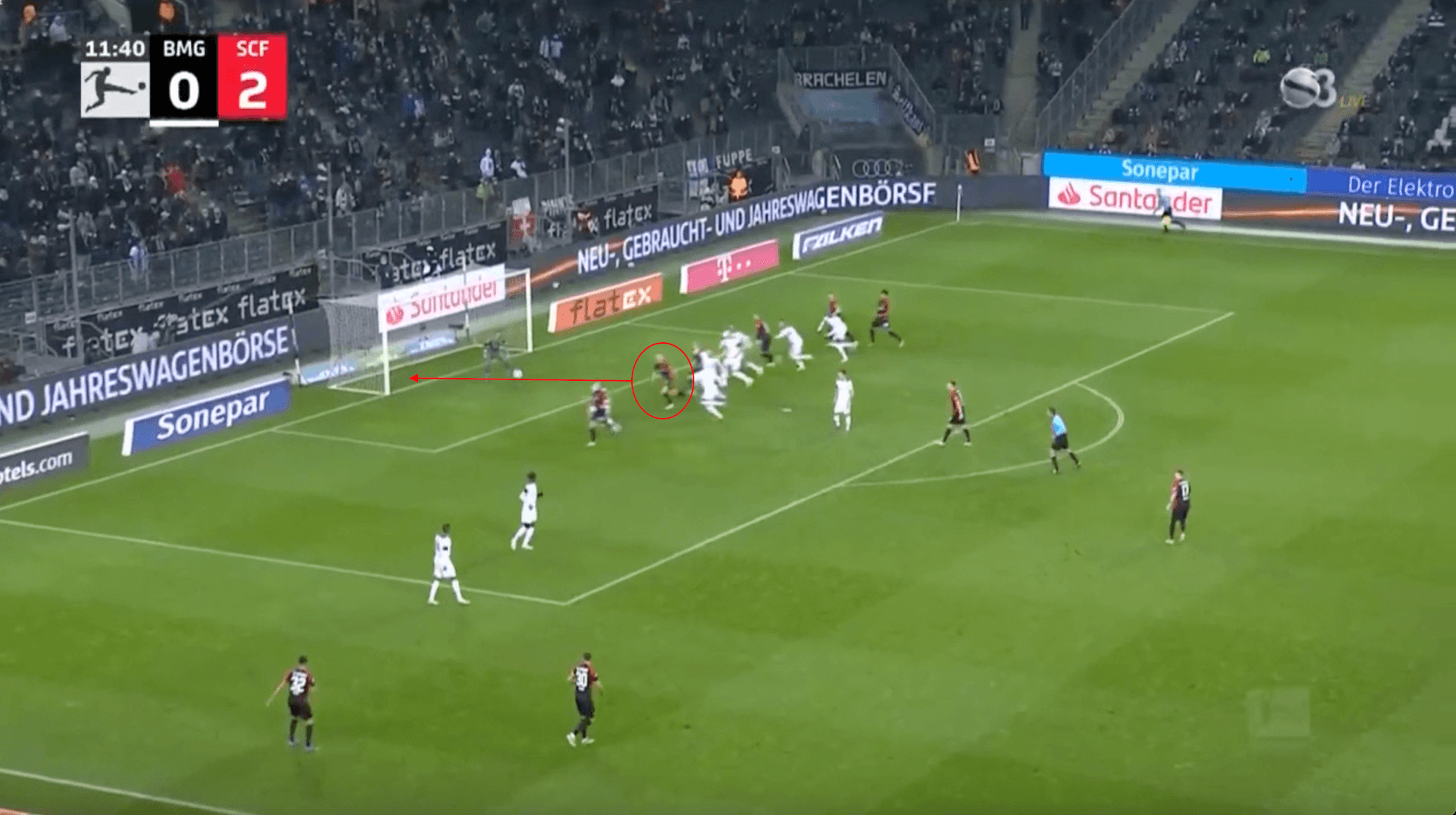
The image above shows an example of a set-piece goal that Gladbach conceded where they did a poor job of marking and were slow to react defensively. Freiburg had a free-kick from just outside the 18-yard box by the near touchline. The ball is played in, with the Freiburg player circled finding himself completely unmarked to shoot the ball at Sommer once the cross reached him, who saves it, but because of the poor reactions from the Gladbach defenders, the rebound shot is easily put into the back of the net from the Freiburg defender. The Borussia Mönchengladbach defensive line does a poor job at defending, playing the Freiburg players onside, and leading to a third goal.
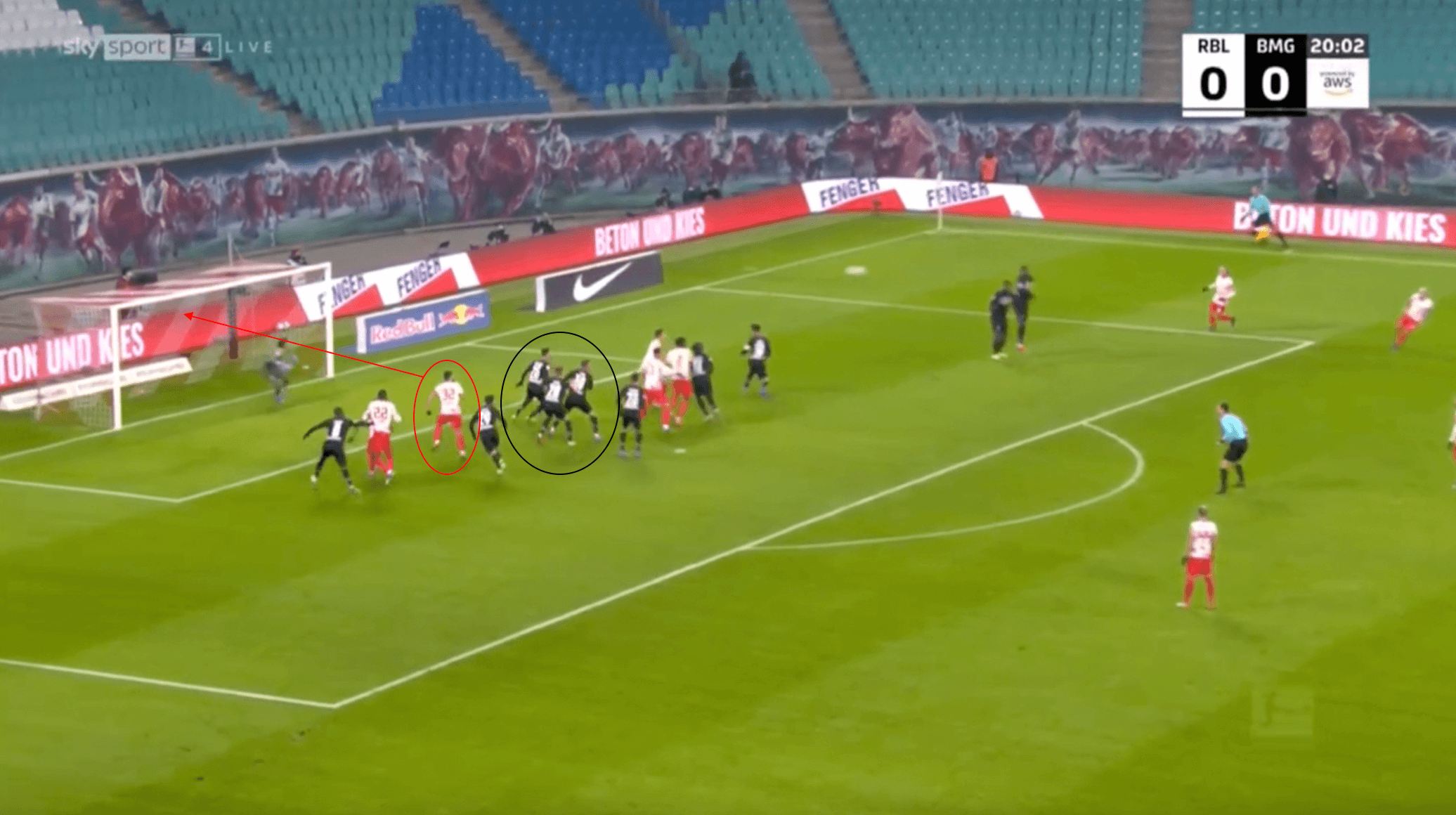
The image above shows a similar situation as the previous example. Against RB Leipzig, Gladbach concede a free-kick, this time from the opposite side. As the ball is played in, the three Gladbach players in the wall circled are all caught ball watching, oblivious to the fact that Joško Gvardiol is making a run into the six-yard box unmarked. As a result of the poor marking, Gvardiol has a free header and is able to easily fire it past Sommer. The trend this season with Gladbach and defending set-pieces is the amount of goals they conceded that were uncontested; with set-piece defending as poor as this, any goalkeeper in world football would have a hard time trying to keep these chances out of the back of the net.
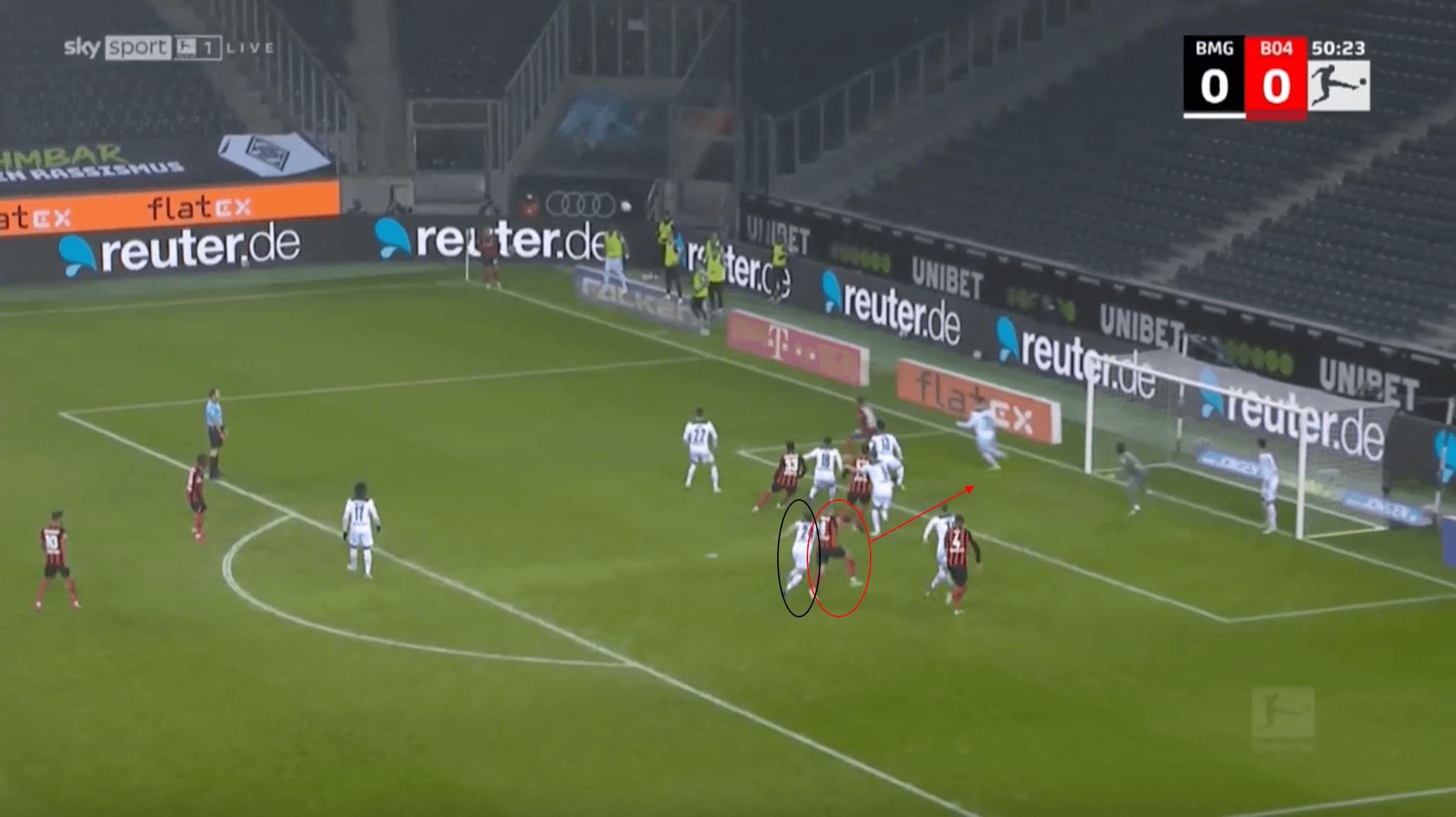
While Gladbach occasionally were suspect at defending from free kicks, they also had their fair share of challenges at times when it came to defending corners as well. An example of their defensive struggles from corners is shown above from their home match against Bayer Leverkusen. The corner is played in with Gladbach centre-back Tony Jantschke tasked with marking Leverkusen midfielder Robert Andrich. Jantschke’s defending is poor, with Andrich able to bully his way past him easily and into the open space in the six-yard box. No other Gladbach players are able to react quick enough, with the ball dropping to Andrich’s feet. His subsequent shot is easily put past Yann Sommer in the Gladbach goal. Though this was more an individual error as opposed to a team one, it still led to the concession of an easily preventable goal from a set-piece.
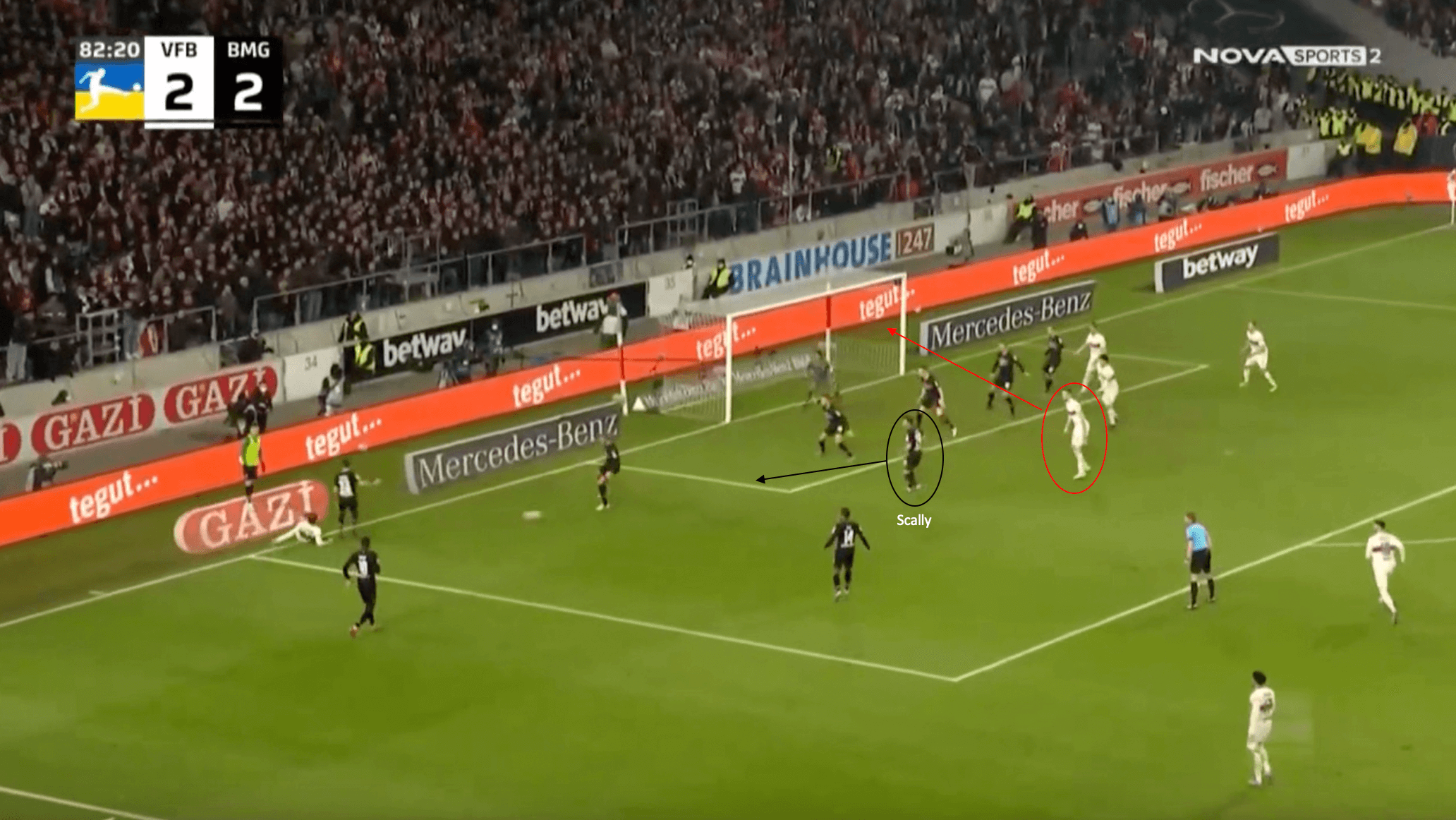
The final image for this section shows another goal that was conceded by Gladbach, this time during the phase following a free-kick. Stuttgart had just taken a free-kick which Gladbach were able to clear towards the edge of the 18-yard box. Though most of the Gladbach defence were able to quickly get set to defend the second ball, Joe Scally was not. Tasked with marking Stuttgart striker and Manchester United target Saša Kalajdžić, Scally was instead caught ball watching. The ensuing ball into the box from the wide position found Kalajdžić unmarked near the penalty spot, where he was able to fire past the defensive line and into the back of the net, completing a remarkable turnaround victory for Stuttgart.
Conclusion
Before the season started, many thought that Adi Hütter would be a great fit at Borussia Mönchengladbach, especially with the work he did at Eintracht Frankfurt, and before that with BSC Young Boys in Switzerland. However, that was not the case, with the threat of relegation for a majority of the season and inconsistent performances playing a key part in his departure.
As this tactics and analysis piece has shown, the defensive side of Borussia Mönchengladbach’s game this season was poor. While there are always many reasons that go into the departure of a manager from a football club, looking back at the torrid season that Borussia Mönchengladbach had, from a tactics perspective, the consistently poor defending takes centre stage.





Comments